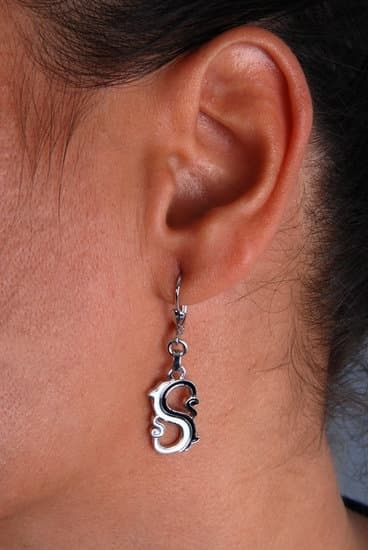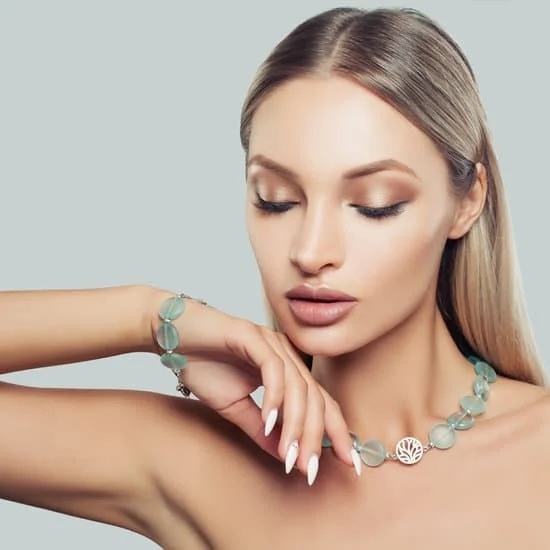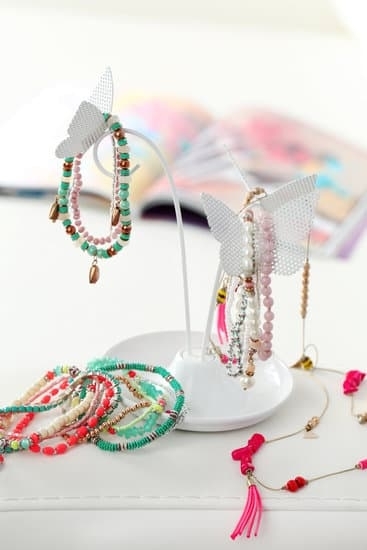Introduction
Victorian Style Jewelry Designs were highly sought after during their era, and remain popular to this day. Victorian style jewelry is characterized by intricate craftsmanship, high quality materials and elaborate designs with intricate detailing. These pieces were created to evoke emotion and convey meaning that ranged from social status, religious beliefs, and values. In addition to its decorative purpose, Victorian jewelry was also used for symbolizing commitment in unconditional love through wedding sets such as engagement rings and bridal sets.
The styles of Victorian Jewelry evolved over the span of 60 years starting with the Romantic Period (1835-1860) up until the later part of the 19th century known as the Grand Period (1880-1901). During these time periods, symbolic motifs such as floral designs, hearts and birds came into favor while other trends included hairwork jewelry, watch fobs and locket necklaces. The most popular metals used ranged from gold; both 18k yellow to 14k rose gold as well as silver plating or rhodium plating for a more subtle look.
These pieces have been updated throughout time yet still remain an iconic look due to its timeless beauty which transcends through generations. Many designers today continue creating collections which feature a take on the classic style of Victorian design. This type of jewelry has become a firm favorite amongst modern fashionistas whose appreciation for detailed styling is unparalleled. Whether you choose traditional or updated Victorian jewels, one thing has remained unchanged – these are some of the most popular choices for special occasions such as engagements and weddings that represent love & romance
History of Victorian Jewelry
The Victorian era of jewelry design (1837-1901) was named after Queen Victoria, who reigned in the United Kingdom during that period. Jewelry designs were inspired by the classic styles of the early 1800s as well as neoclassical and romantic influences. This was further impacted by technological advances, such as the industrial revolution and mass production.
During this period many different types of jewelry designs were created including grandiose statement pieces, delicate floral motifs and intricately carved cameos. There was also a preference for sentimental stones like opals, which symbolized hope and love, pearls for purity and greens for good luck. Popular metals included rose gold, yellow gold and silver – each one representing its own unique message or sentiment. Gold was also used to denote wealth, prestige and faithfulness to Victoria’s reign. Designers also used enamel techniques to create elaborate displays in an array of vibrant colors.
Victorian jewelry reached increased popularity after Prince Albert’s death in 1861; symbolizing everlasting friendship, love and devotion between husband & wife with intricate detailing on brooches & rings using combinations of engraved letters intertwined with symbolic patterns such as butterflies or hearts representing eternal bonding & caring affectionate moments.
Not only were these pieces popular with royalty but they gained widespread admiration amongst middle classes too – showing off their status & refinement via very expensive pieces made especially for them with specific stones being chosen to pass on sentiments or feelings between friends or loved ones making it a very special gift idea! This era saw major improvements in quality due its mass production methods allowing those from all walks of life to afford beautiful pieces from emerging designers at more affordable prices than ever before!
Meaning of Jewelry
Victorian jewelry has a distinct style that is easily recognizable even today. During this time period, jewelry was often symbolic and laden with deeper meaning. This was often expressed through the designs and ornamentation of the pieces themselves, particularly in figures and animal motifs. For example, snakes were a frequent detail seen in some Victorian jewelry; these symbolized eternal love and everlasting life. The image of an anchor denoted hope, while birds signified joyance and freedom. Additionally, rings were featured with interlocking hands to express love that stands the test of time, as well as flowers with entwined stems to represent strong bonds between people. Another common theme used during this period involved nature imagery such as stars, crescent moons, and waves – which signified eternity or eternity itself within Nature – as well as geometric shapes like circles and crosses which depicted infinity. By understanding the deeper meaning behind these symbols viewers can gain insight into the thoughts, emotions and intentions of those who made them centuries ago.
Metalwork Techniques
When it comes to Victorian jewelry designs, metalwork crafting techniques play a huge part in the overall look of a piece. During the 19th century, goldsmiths and silversmiths would use a variety of approaches to work with metals like gold and silver. Some of these included granulation, filigree, repoussé, enameling and engraving.
Granulation is an ancient metalworking technique used to create small designs or borders. It involves creating small round balls that are then welded together in intricate patterns. The effect of a successful piece of granulation resembles birds’ eggs or tiny beads strung together.
Filigree is another classic method that was also used in Victorian jewelry-making. Metal wires were bent into complex shapes and often soldered onto the surface of an object to create a delicate lacy pattern, perfect for rings and other decorative items.
Repoussé works by impressing an image into soft metal using tools such as hammers or punches; it gives the final product a raised relief pattern such as flowers, stars or swirls. It was often used on cufflinks or pins because it could create more elaborate designs than traditional engraving methods.
Enameling is another popular option for adding color to jewellery; it uses glass-like materials which are placed onto metal objects before being fired at high temperatures until the material fuses with the metal base below, creating stunning gradients and detailed images or patterns on the surface of jewellery pieces.
Engraving is probably the most recognisable technique used in jewellery-making during this time period; stories, initials and other imagery could be subtly etched into any item using small hammering tools like burins and chisels – often called chasing tools – combined with pestles to hit them against the item they wanted to etch on.
Settings and Finishes
Victorian-style jewelry typically incorporates several different types of settings and finishes. These unique features contribute to the overall look of a piece and can become a signature look over time. A few of the most popular settings used in Victorian jewelry designs include prong, bezel, and gypsy settings. Prong settings involve erecting claws or prongs around a gem to hold it securely in place. This is one of the most popular settings used to display diamonds and other precious stones. Bezel settings involve encircling a gemstone within metal bands in order to secure it in place – this is an even more secure way to keep smaller gems in place as compared to prong settings. Lastly, gypsy settings are usually used for larger gems that are set at an angle or flush against the setting’s surface. Finishes may also vary from high polish or mirror finish, satin finish, hammer texture finish, and brushed texture finish. High polish and mirror finishes are very smooth and reflective while satin is still reflective but with a bit of texture. The hammertexture finish has been hammered with tools to give it dimension while brushed texture provides soft lines with paintbrushes made specifically for artisans who work on gold and silver pieces. Each of these finishes can add to the beauty of any piece regardless of its style or period origin!
Popularity of Victorian Jewelry
The popularity of Victorian Jewelry is unparalleled. More than a hundred years have passed since the Victorian Era, yet its style of jewelry designs remain sought after today. In fact, it remains one of the most popular styles in the world. Why is this the case? It could be that the Victorian Era was such a rich and eventful period in Britain’s history. Also, their intricate designs reflect both honesty and imagination which are appreciated by many wearers who want to adorn themselves without overdoing it. Furthermore, Victorian jewelry pieces showed great attention to detail unique to that era which are greatly admired today. This includes brush strokes on metal for engraving as well as colorful details added to elevate its appearance.
Additionally, much like classic styles from fashion designers or popular automotive models from past decades, timeless design and craftsmanship makes Victorian jewelry valued pieces capable of passing through generations. People appreciate the use of precious stones and metals such as emeralds and silver commonly found during that era and these materials mean that their vintage look will last indefinitely. Finally, a lot of symbolism can be associated with particular jewels making them an excellent choice for romantic or special occasions such as anniversaries or engagements amongst others. Taking all of the above factors together it can still easily be seen why so many people love these designs even centuries later.
Famous Examples
Victorian Style jewelry designs have become some of the most iconic and highly sought after pieces in fashion today. These styles are characterized by intricate detailing, delicate lines, and romantic motifs that are sure to turn heads. One of the most famous examples of Victorian Style Jewelry Designs is the Faberge egg. This intricate craftwork was originally created as an Easter gift for the Russian Imperial family so they could start a new tradition of luxury gifting. Today, this piece has been hugely influential in many modern designs due to its unique creativity and use of precious gemstones and metals. Other recognisable pieces from the Victorian era include marcasite stones set in sterling silver shapes with detailed engravings on them, along with lockets crafted from gold adorned with ornamental drawings on the outside.
The influence of these signature styles can often be seen in modern-day jewelry designs – for example, art nouveau inspired jewelry has dominated both trendy streets and high fashion catwalks due to its powerful use of flowing lines and feminine patterns. Similarly, Victorian necklaces have become popular recently as they show off an aura of sophistication without sacrificing any sparkle or glamour. Engagement rings continue to hold strong influences from vintage eras such as Victorian style – diamond cuts reflecting a particular moment in time where classical elegance came together with opulence to create something timelessly beautiful.
Shopping Tips
When shopping for Victorian jewelry, it is important to take into consideration the era when looking for a piece of jewelry. This period saw many different styles, materials, and techniques employed in the making of these pieces. First, consider the type of metal used. Many of the pieces during this period were made with gold or silver. Consider also the types of gemstones set in the metal: diamonds were popular stones used in this time frame; other gems used included sapphires, rubies, and tourmalines.
To be sure you’re getting a genuine article from this period, do your research beforehand so you know what to look for when you go out shopping. Be sure to inspect each piece carefully before purchasing, looking for small details such as engravings or tool marks that might indicate an authentic piece from this period. Also look out for unique features that are specific to Victorian jewelry such as swooping curves and bright stones arranged in particular shapes.
In addition to traditional brick-and-mortar stores selling Victorian style jewelry pieces, there are also online retailers that specialize in antique jewelry who may offer excellent deals on authenticated items from this era. Get an appraisal or certificate of authenticity if possible to be certain you’re getting a good value on your purchase.
Conclusion
Victorian style jewelry designs continue to reign in popularity as they offer intricate details, quality craftsmanship, and stunning designs. Genuine Victorian design pieces incorporate some of the most iconic characteristics from the era such as filigree work, piercing techniques, rose-cut diamonds, ornamental settings, and romantic motifs. These elements are combined to create exquisite yet timeless pieces that honor the overall aesthetic of Victorian jewelry. Whether given as a special gift or worn for a special occasion, Victorian jewelry designs can be found in various colors, materials, and styles making them perfect for any taste and budget. As we’ve discovered in this exploration of Victorian jewelry designs it’s easy to fall in love with these beautiful jewels and their breathtaking attention to detail. All in all one cannot ignore the sheer classiness and femininity celebrated by this era; therefore wearing a piece of historic jewelry is an excellent way to express your personality while also expressing human ingenuity at its finest.

Welcome to my jewelry blog! My name is Sarah and I am the owner of this blog.
I love making jewelry and sharing my creations with others.
So whether you’re someone who loves wearing jewelry yourself or simply enjoys learning about it, be sure to check out my blog for insightful posts on everything related to this exciting topic!





